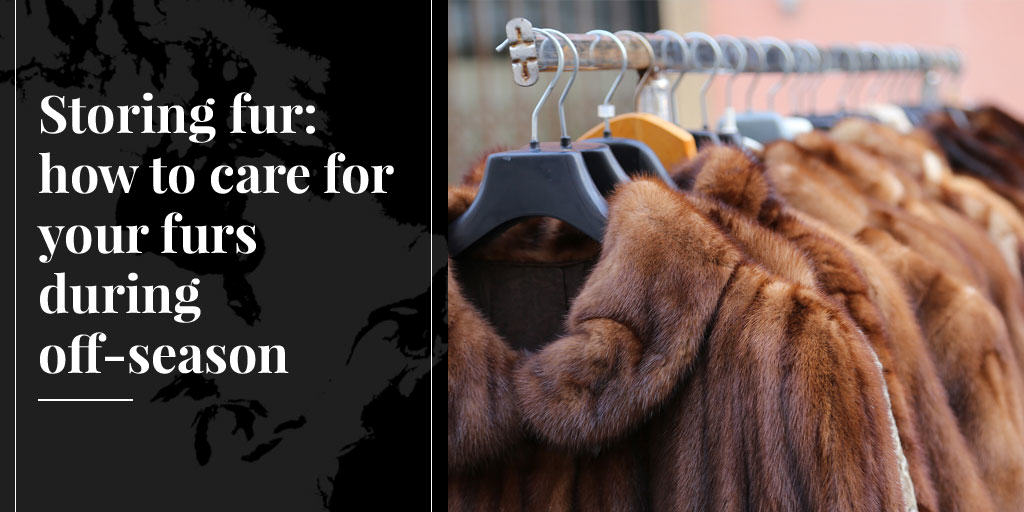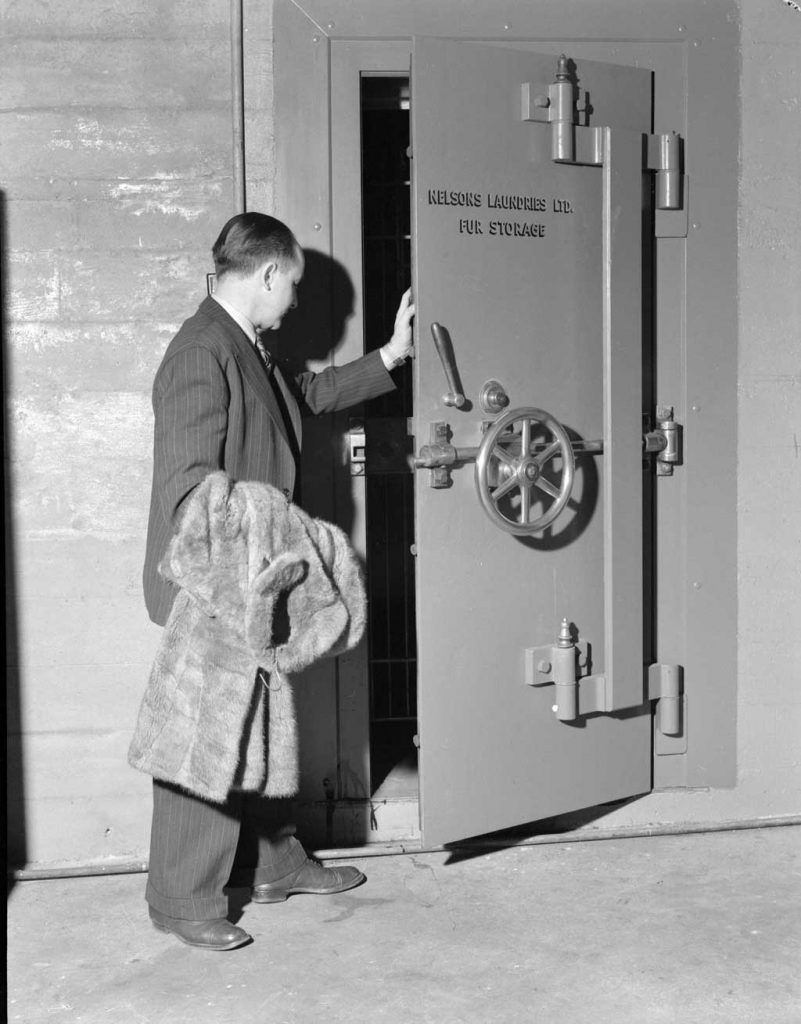
Spring is the time to put away your furs, and correct storage during the off-season is essential if you want to enjoy the warmth, comfort and beauty of your furs for many years. Storing fur coats and jackets is usually best done with a professional retail furrier, although there may be occasions when you want to store some items at home. (More on this below.)
If you own valuable furs (valuable financially or sentimentally), you should definitely store them professionally during the summer months. A good furrier will have a storage facility which is kept in a range of 50-60F (10-15C) and 45-55% humidity, which has been shown to be the ideal conditions for preserving furs. Most people store their furs through the summer months, and bring them home when the cooler weather returns in the fall.
Another reason for storing fur with a professional is that it provides an opportunity for your retail furrier to thoroughly inspect your fur at the end of the season. Small tears, missing buttons, worn spots or other damage can then be identified and repaired before they become bigger and more costly problems.
Your retail furrier is also equipped to properly clean your fur, removing oils (e.g., around the neckline) and small particles of dirt or grit that can damage fur follicles. Professional cleaning also restores the natural brilliance and beauty of your furs.
Just like you would service a car, maintain a house, or correctly clean and store silverware, caring for your furs will protect your investment and assure many more years of use.
Fur storage costs are usually based on the value of your garments. So storing a coat valued at $500 may cost as little as $32 (or $39, including a year-round insurance policy). At the higher end, a $4,500 coat might cost $86 for storage (or $133 including year-round insurance) – i.e., about the price of one decent cup of coffee per week. [Storage prices vary depending on rent and other costs in different regions.]
But what if you have vintage pieces that aren’t in top-notch condition, or other inexpensive garments, trims or accessories? Or maybe there’s no furrier in your area? Is it possible to keep your furs in reasonably good condition at home?

Unfortunately, it is near impossible to duplicate the controlled atmosphere of a professional fur-storage vault in your home closet. But here are a few tips to help protect your furs as well as possible in a home environment:
• Avoid storing fur in a basement, where it can be too damp. Too much humidity can result in a moldy lining.
• Ideally you want to store the furs in a place where there is no direct sunlight, and not too much heat. A bedroom is often a good choice, providing you don’t keep yours too warm.
• The furs need to hang freely and have a bit of air, so don’t try to stuff too many in a closet.
• Use a proper fur hanger, with shoulders, to preserve the shape of your coat.
• If you don’t use your furs frequently, or during the summer months, cover them with cotton garment bags or cotton sheets.
• Never store your furs in plastic; fur needs to “breathe”.
• Removable fur parka trims, scarves, or other accessories can be stored on hangers or in uncovered boxes in your closet.











I store my coat at Christos Furs in Westchester, IL. They are wonderful in terms of cleaning, repairing and storing. https://www.christosfurs.com/
Who supplied this information? Fur does require humidity in a dry climate. Please check the fur association site. Also, where are rates based on value of the fur piece? And where are you able to store for $39 to $36? Denver storage is $60 in 2019 and includes local pick up and delivery and of course the cost always includes insurance.
The price of storage is based off of location and care. The temperature should be maintained around 55 degrees. In a city like NY, the cost of fur storage will be higher than in a city in Ohio. Its based upon the real estate costs. In NY the cost of fur storage ranges from $45-$75 per coat. In addition, you need to take in consideration pick and delivery.
https://kaufmanfurs.com/fur-storage-fur-cleaning-fur-repairs/
A fur coat is handmade from the skinning, to the curing, the fitting, to the design and structure. If you had a wedding dress handmade to last you 30 years of winter wear, and that garment — like a good fur — would cost $7000 to $10000 or twice that, why wouldn’t storage be a valued service, with passing regard for the expense? I would happily pay for cold storage if it protected my costly, well-made garment from moths, mold, mildew, other vermin, and fire, theft or vandalism, of course I would! When you insure such a garment, you are paying for the appraised replacement cost, not the actual cash value: does anyone question why a valuable fur oughtn’t to be fully insured? Insurance policies do not cover vermin, mold or mildew, or drying out of skins: so, if a $10,000 to $20,000 investment is worth insuring, it is worth professional storage.
I store my furs but you can’t make me like it.